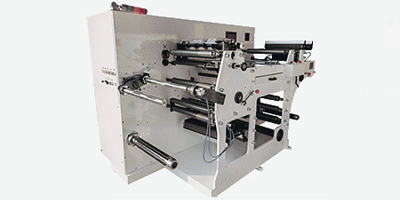In the modern packaging industry, the Label Inspection Machine plays a vital role. Its production efficiency is directly related to the overall production efficiency of enterprises and the level of product quality control. An efficient label inspection machine can quickly and accurately inspect a large number of labels, reducing the outflow of defective products and enhancing the product image. This article will conduct an in-depth analysis of the factors related to the production efficiency of this machine, providing a powerful basis and reference for enterprises in selecting and optimizing the label inspection process.

I. Inspection Speed
(1) The number of labels inspected per unit time: Advanced Label Inspection Machines are capable of inspecting hundreds or even thousands of labels within one minute. This depends on the performance of the image acquisition system. For example, an inspection machine equipped with high-resolution and high-speed cameras can quickly capture label images and conduct analysis. For instance, a well-known brand of inspection machine can inspect 800 labels per minute in the standard mode, greatly improving the efficiency of label inspection on the production line.
(2) Differences in inspection speeds for different types of labels: For simple text labels and complex labels with both pictures and texts as well as special anti-counterfeiting marks, the inspection speeds will vary. Generally speaking, the inspection speed for simple labels is faster because their feature recognition is relatively easy, while complex labels may require more algorithm processing and image analysis time. However, excellent inspection machines can optimize algorithms to minimize such speed differences and ensure that the overall production efficiency is not overly affected.
II. The Impact of Inspection Accuracy on Production Efficiency
(1) False detection rate and production efficiency: If the false detection rate of the inspection machine is too high, a large number of actually qualified labels will be misjudged as unqualified, requiring manual re-inspection, which will undoubtedly reduce production efficiency. For example, if the false detection rate reaches 10%, the originally smooth production line may slow down by half due to frequent re-inspections and adjustments. Therefore, high-precision detection algorithms and reliable sensors are the keys to reducing the false detection rate and ensuring production efficiency.
(2) Missed detection rate and production efficiency: Conversely, a high missed detection rate means that defective labels will flow into the market, which will not only damage the enterprise's reputation but also may cause huge losses due to customer complaints and product recalls, indirectly affecting production efficiency. A high-quality Label Inspection Machine should keep the missed detection rate at an extremely low level, such as below 0.1%, to ensure product quality and the efficient operation of the production process.
III. The Degree of Automation and the Improvement of Production Efficiency
(1) Automatic loading and unloading systems: The Label Inspection Machine equipped with automatic loading and unloading systems can achieve seamless connection in label inspection. The automatic loading system can continuously supply labels to be inspected to the inspection area, and the labels after inspection will be automatically sorted and collected by the unloading system without the need for manual intervention, reducing the time and labor intensity of manual operations and improving the overall production efficiency. For example, in some highly automated production lines, the efficiency of the label inspection process has been increased by more than 30% through automatic loading and unloading systems.
(2) Automatic calibration and self-diagnosis: The automatic calibration function of the inspection machine can ensure the stability of the inspection accuracy during long-term operation. It can adjust the inspection parameters regularly according to the preset standards to avoid the decline in accuracy caused by equipment aging or environmental changes. Meanwhile, the self-diagnosis function can detect potential equipment failures in time and issue alarms, reducing the downtime caused by sudden equipment failures and ensuring the continuity and efficiency of production.
IV. The Optimization of Production Efficiency through Integration with the Production Line
(1) Matching of synchronous running speeds: When the Label Inspection Machine is integrated with the entire production line, its running speed needs to match that of the equipment in the preceding and subsequent processes. For example, in a beverage filling production line, the inspection speed of the label inspection machine should match the speeds of the filling machine and the packaging machine to ensure that the label inspection process does not become a bottleneck in the production line. If the production line speed is 500 bottles per minute, the inspection speed of the label inspection machine should be able to reach or slightly exceed this value to ensure the smoothness of production.
(2) Data interaction and production adjustment: The data interaction between the inspection machine and other equipment on the production line is also important. It can feed back the detected label quality data to upstream equipment, such as printing machines, in real time so that the printing parameters can be adjusted in a timely manner to reduce the production of defective products. Meanwhile, it can also classify and screen labels according to the requirements of downstream packaging equipment, improving the intelligence level and production efficiency of the entire production line.
GET A QUOTE